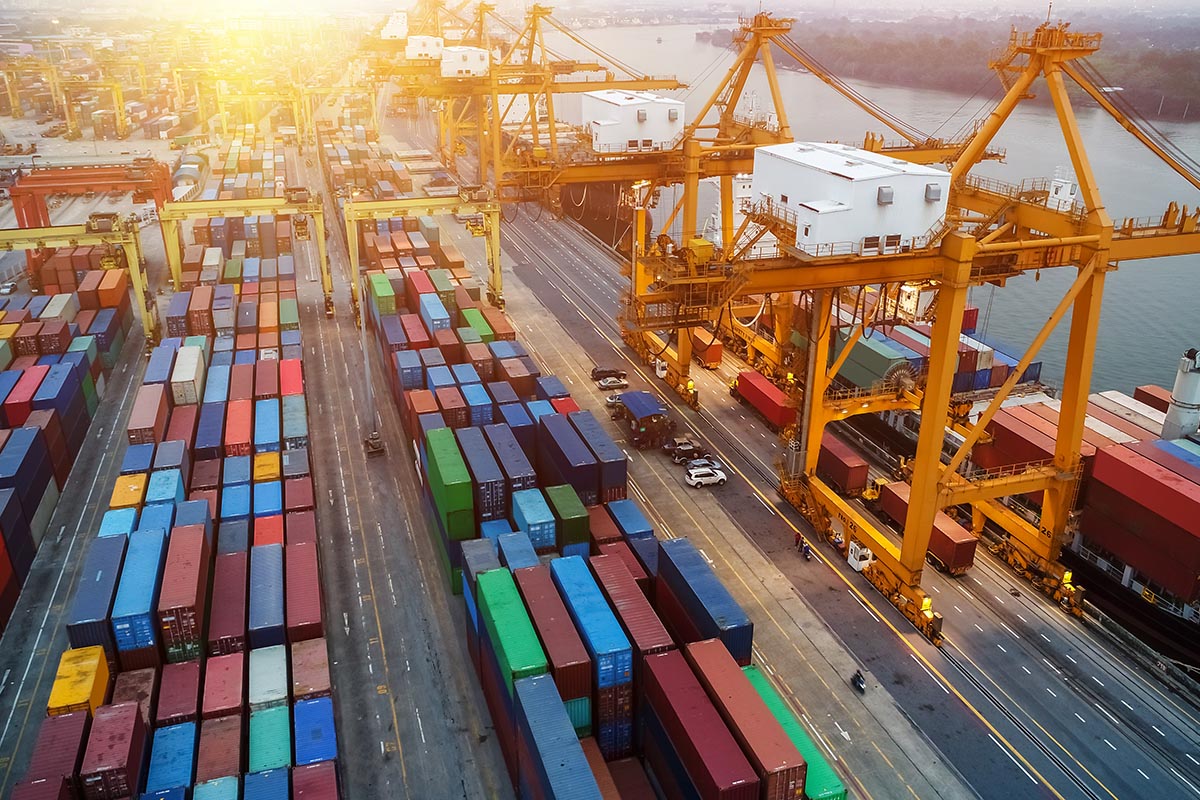Dry ports are located away from water. They are generally located close to inland railway stations. Wet ports, on the other hand, are near the ocean or a river.
In this article, we are going to discuss how dry Ports can be used as Extensions of Maritime Deep-Sea Ports.

The emergence of dry ports is considered as a key outcome of the containerization trend and the increasing integration between seaports and hinterland networks. Within the supply chain, dry ports might work as inland hubs to facilitate the movement of cargo in the hinterland, or extensions of seaports to relieve the burden of limited capacity, natural constraints and diseconomies of scale such as congestion or environmental issues.
Dry port was defined as a common user facility with public authority status, equipped with fixed installations and offering services for handling and temporary storage of any kind of goods (including containers) carried under customs transit by any applicable mode of transport; that is placed under customs control and with customs and other agencies competent to clear goods for home use, warehousing, temporary admissions, re-export, temporary storage for onward transit and outright export.
Dry ports are container intermodal terminals that are located inland away from the sea, and that are connected to a near or distant seaport by road and rail. As in a regular port, inland container depots or ICDs handle and store cargoes that enter and leave.
TYPES OF DRY PORT
The various types of dry ports or hinterland ports can be categorized into distance range, mid-range or close range. Each type format has its function and it render services as the case of the environment, terrain and policies in relation to freight and logistics or location. Some other services provided at the seaport that can be offered includes (Customs clearance, maintenance of containers, storage, forwarding, etc.), which can help to increase the product life cycle of the seaport.
FUNCTIONS OF A DRY PORT
- Transshipments of cargo between different transportation means
- Management of container flows to different ports
- Sorting
- Storing
- Consolidation of individual container flows
- Reduction of pre- and post-haulage of road transport and expansion of rail transport.
ADVANTAGES OF DRY PORT
- Increases seaport capacity
- Increases seaport productivity
- Reduces congestion at seaports
- Reduces congestion in seaport cities
- May serve as a depot
DISADVANTAGES OF DRY PORT
- Government Policies and Regulations
- Environment and community effects
- Land use restriction
Cameroon has an advantageous geographical location with its seaports in Douala, Kribi and Limbe, its selves landlocked African countries such as Central African Republic and Chad. In early April, Cameroon’s government announced it would spend 1.3 billion CFA francs ($2.36 million) for the construction of a dry port in the town of Ngaoundéré, located in the northern part of the country. The move is just the latest in a growing trend that is helping ensure that landlocked countries are well served by far away seaports and which stands to improve the continent’s logistics substantially.
RANDY LOGISTICS stands out as your No: 1 logistic partner in Cameroon to assist you with custom clearance and delivery to these corridors. Whatever the nature of your cargo, we remain the one stop shop for all solutions to Bangui, Chad and Ngaoundere. With our experience, excellent services and competitive rates, your cargo is safe with us.

